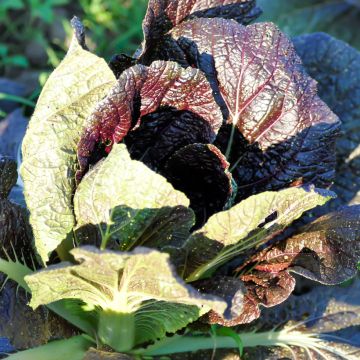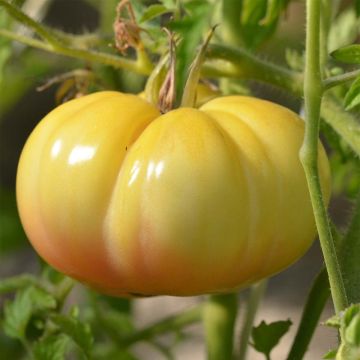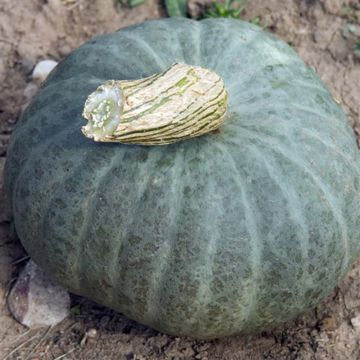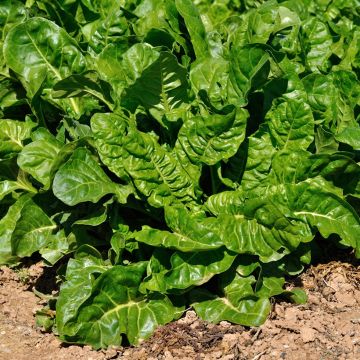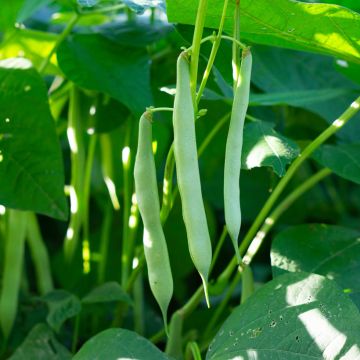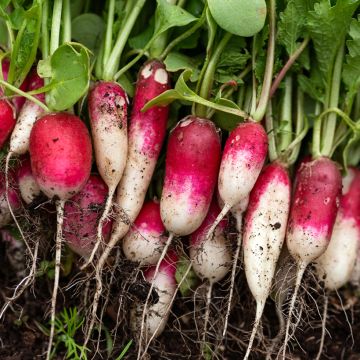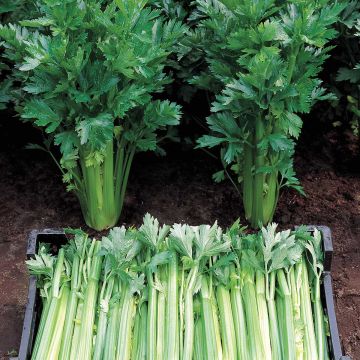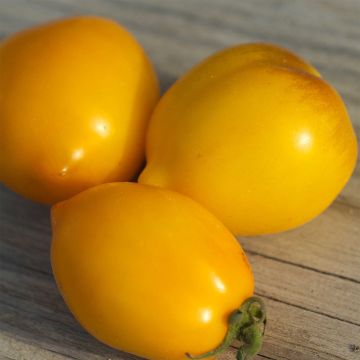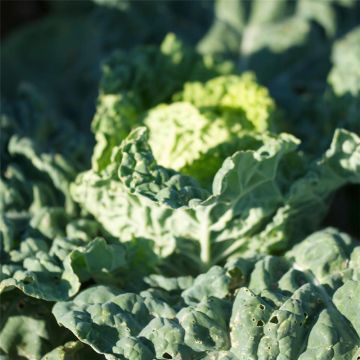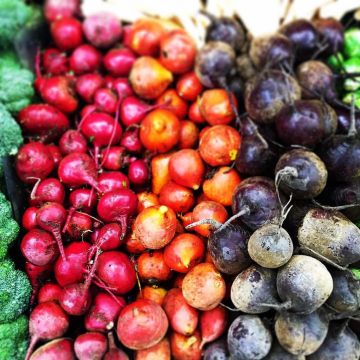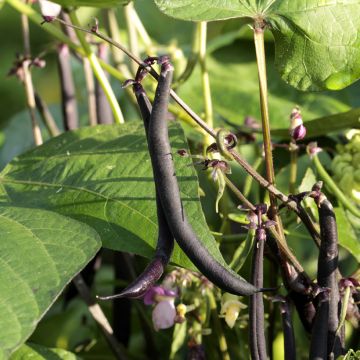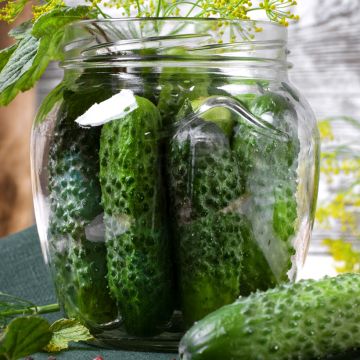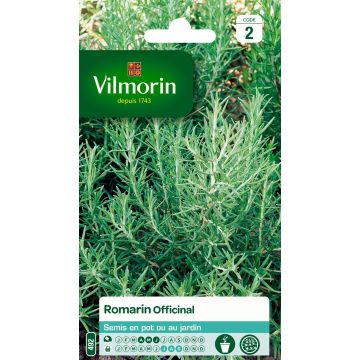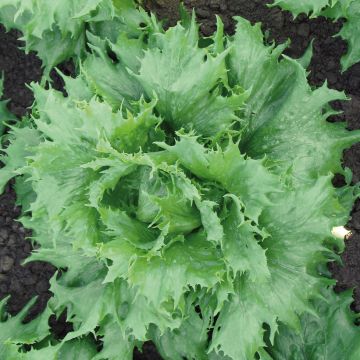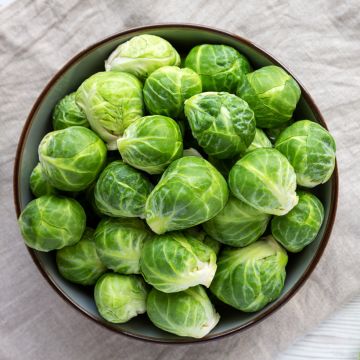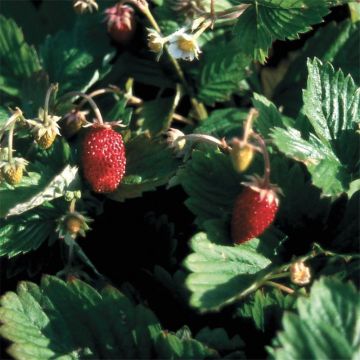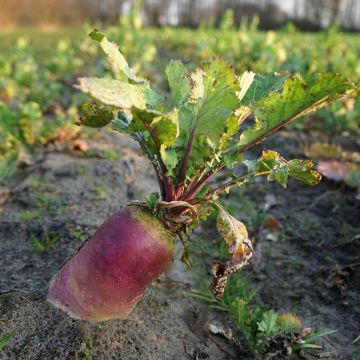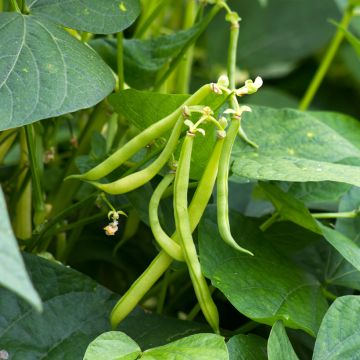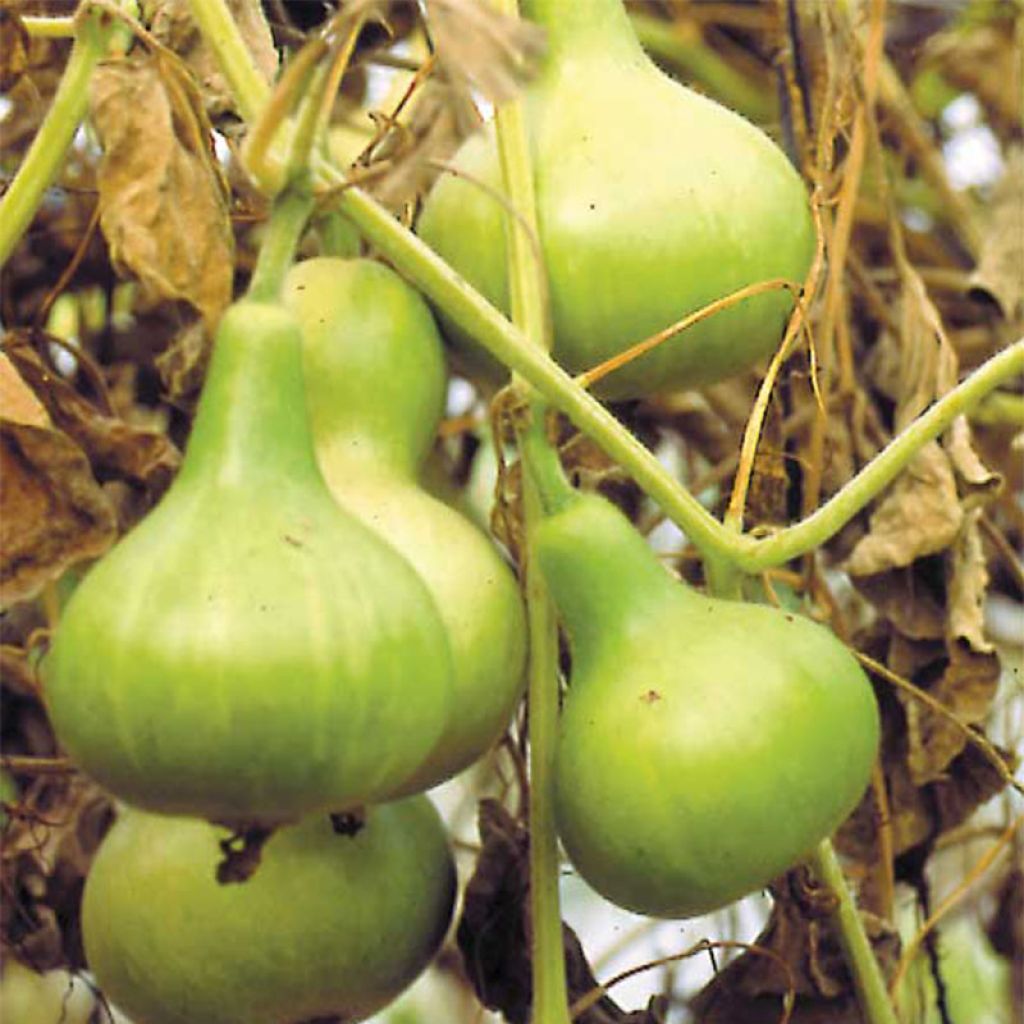

Gourde Mini Calebasse Bio - Ferme de Sainte Marthe
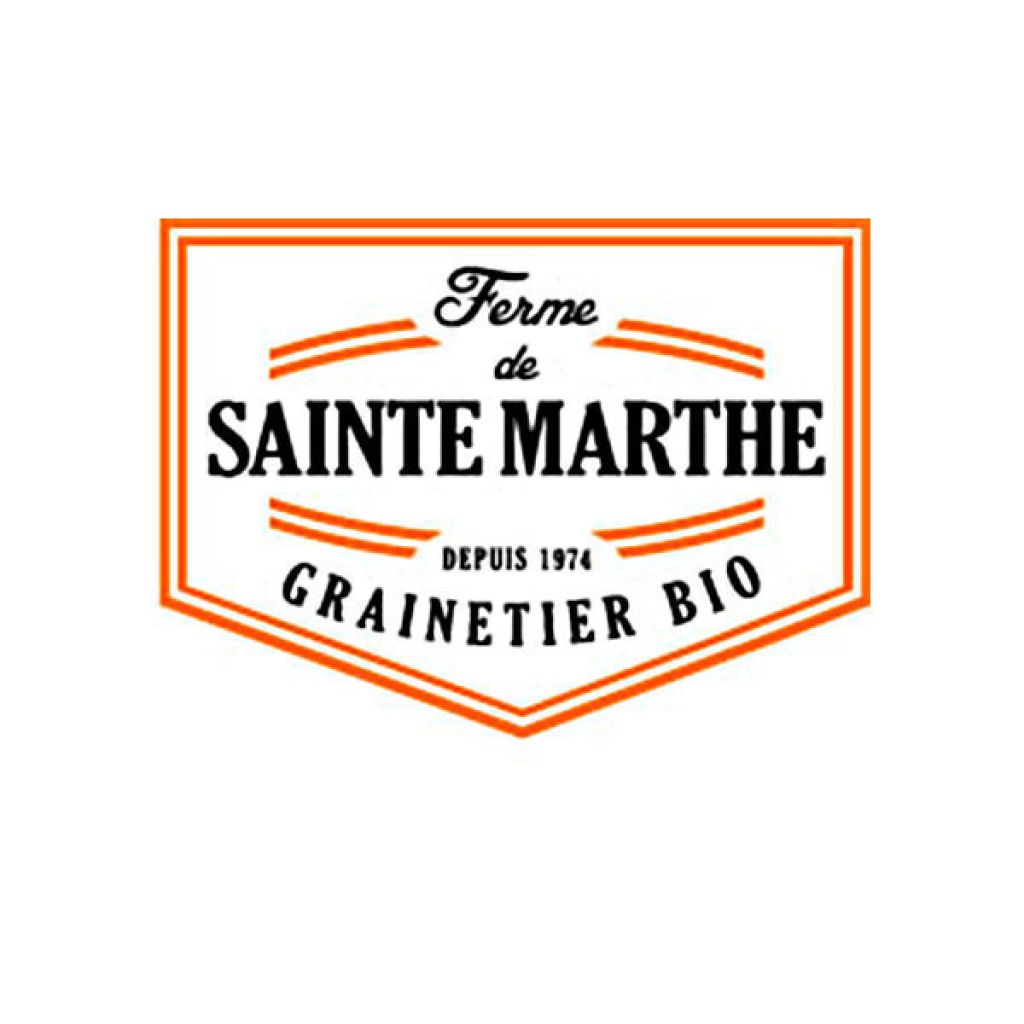

Gourde Mini Calebasse Bio - Ferme de Sainte Marthe
Gourde Mini Calebasse Bio - Ferme de Sainte Marthe seeds
Lagenaria siceraria Mini Calebasse
Bottle gourd, Calabash, White-flowered gourd, Long Melon
This item cannot be shipped to the selected country
Dispatch by letter from €3.90
More information
Schedule delivery date,
and select date in basket
This plant carries a 6 months recovery warranty
More information
We guarantee the quality of our plants for a full growing cycle, and will replace at our expense any plant that fails to recover under normal climatic and planting conditions.
Seed-only orders are dispatched by sealed envelope. The delivery charge for seed-only orders is €3.90.

Description
The Mini Gourd Calabash is a miniature version of the Pilgrim Gourd. Not edible, pear-shaped and cream white, it shares the same characteristics as the Pilgrim Gourd, except for its size. This Mini Calabash measures 4 to 8 cm at the base and 6 to 10 cm in height. Smaller, they are also more numerous per plant: each plant forms 5 to 15. Cute and useful both green and dried, you can sow them from March to June to harvest them from July to November.
The Calabash is an herbaceous plant belonging to the Cucurbitaceae family. It is a distant cousin of the squashes, pumpkins, and gourds that we are familiar with. Often called gourd or bottle gourd, it is cultivated both as a vegetable plant and because once dried, its fruit becomes a tool that can be used in a multitude of ways. Calabashes can be found in Asia, Africa, and the Americas. It is an annual plant that can creep or climb thanks to its tendrils. Its leaves are widely pubescent and produce a fairly characteristic odor. And in spring, after flowering with large white flowers, it produces round fruits, or with a neck resembling a bottle or amphora. Some varieties can be consumed when very young, like zucchini. However, some are toxic and therefore not edible. On the other hand, when harvested much later, all of them can become kitchen utensils, musical instruments like the Kora - an African harp - or the Berimbao accompanying the Capoeira fighters in Brazil, candle holders, containers for maté or pelvic cases, etc. This is only possible when the fruit has completely dried and the flesh has disappeared. This plant, already mentioned by Pliny the Elder as a container for liquids, was also recommended in the Capitulary of Villis as a plant to be cultivated for the same reasons. This Cucurbitaceae can also be used to dress up trellises and pergolas with a lot of taste.
Harvest: calabashes are fruits that need a lot of sun to give their best, like any plant native to tropical regions. For consumption as zucchini, the fruit will be harvested immature with a slightly tender skin. The taste of calabashes is not very pronounced, but it is an experience to try if they are edible. To make utensils, you will have to wait until the peduncle is completely dry. Harvesting should be done as late as possible.
Storage: if they are harvested to be consumed, the skin must still be tender and the fruits will only keep for a few days in the refrigerator's vegetable drawer. Once completely dry, calabashes can be stored indefinitely. They can be carved, painted, pierced, etc. It's up to you to use your imagination to make them into the object that suits you. When dry, they become very fragile. It is important to handle them with care.
Gardener's tip: calabash fruits should remain on the plant for as long as possible, but bad weather can also cause them to rot. You can then dry them indoors by hanging them up. They are generally vigorous plants with very decorative fruits and flowers. Provide them with a trellis so that they can climb, sprawl, and let their fruits hang down like lanterns. Calabashes do not like humidity. Make sure to give them only the necessary amount of water during the summer.
Report an error about the product description
Harvest
Plant habit
Foliage
Botanical data
Lagenaria
siceraria
Mini Calebasse
Cucurbitaceae
Bottle gourd, Calabash, White-flowered gourd, Long Melon
South Africa
Annual
Other Sainte Marthe farm
Planting and care
Gourd seeds require well-drained soil rich in organic matter. They also require plenty of sunlight but little water for beautiful fruits.
For early cultivation: in March or April, sow your seeds in holes of two or three in crates or pots with soil rich in organic matter. Then lightly cover and water to maintain a slight moisture. Germination is quite fast: after about ten days, you will see the first seedlings appear. Once they are strong enough and there is no risk of frost, transplant them in the open ground that you have previously loosened. Each plant requires a lot of space. If possible, space them 1 meter apart. Dig holes about 20 to 25 cm in all directions and fill them two-thirds with compost. Then position the plant and put back the soil, then tamp vigorously. Keep your sowings at 20°C. Gourds love warmth.
For seasonal cultivation: once there is no risk of frost, sow two to three seeds in holes 2 to 3 cm deep. Lightly tamp down, then wait about ten days for the first shoots to appear. You will have previously spaced your holes. Gourd plants are very aesthetic on trellises or pergolas. As the fruits grow, stake or train them along. Harvest can be done from July to consume as courgettes. They are picked when immature. Gourds are harvested in autumn as late as possible. A simple method to know the right time to harvest is to observe the neck: if it is completely dry and the fruit is ready to detach itself, then the moment has come. Well-dried gourds change color. However, if your autumns are humid, do not hesitate to harvest and dry the fruits indoors.
Seedlings
Care
Intended location
-
, onOrder confirmed
Reply from on Promesse de fleurs
Vegetable seeds
Haven't found what you were looking for?
Hardiness is the lowest winter temperature a plant can endure without suffering serious damage or even dying. However, hardiness is affected by location (a sheltered area, such as a patio), protection (winter cover) and soil type (hardiness is improved by well-drained soil).

Photo Sharing Terms & Conditions
In order to encourage gardeners to interact and share their experiences, Promesse de fleurs offers various media enabling content to be uploaded onto its Site - in particular via the ‘Photo sharing’ module.
The User agrees to refrain from:
- Posting any content that is illegal, prejudicial, insulting, racist, inciteful to hatred, revisionist, contrary to public decency, that infringes on privacy or on the privacy rights of third parties, in particular the publicity rights of persons and goods, intellectual property rights, or the right to privacy.
- Submitting content on behalf of a third party;
- Impersonate the identity of a third party and/or publish any personal information about a third party;
In general, the User undertakes to refrain from any unethical behaviour.
All Content (in particular text, comments, files, images, photos, videos, creative works, etc.), which may be subject to property or intellectual property rights, image or other private rights, shall remain the property of the User, subject to the limited rights granted by the terms of the licence granted by Promesse de fleurs as stated below. Users are at liberty to publish or not to publish such Content on the Site, notably via the ‘Photo Sharing’ facility, and accept that this Content shall be made public and freely accessible, notably on the Internet.
Users further acknowledge, undertake to have ,and guarantee that they hold all necessary rights and permissions to publish such material on the Site, in particular with regard to the legislation in force pertaining to any privacy, property, intellectual property, image, or contractual rights, or rights of any other nature. By publishing such Content on the Site, Users acknowledge accepting full liability as publishers of the Content within the meaning of the law, and grant Promesse de fleurs, free of charge, an inclusive, worldwide licence for the said Content for the entire duration of its publication, including all reproduction, representation, up/downloading, displaying, performing, transmission, and storage rights.
Users also grant permission for their name to be linked to the Content and accept that this link may not always be made available.
By engaging in posting material, Users consent to their Content becoming automatically accessible on the Internet, in particular on other sites and/or blogs and/or web pages of the Promesse de fleurs site, including in particular social pages and the Promesse de fleurs catalogue.
Users may secure the removal of entrusted content free of charge by issuing a simple request via our contact form.
The flowering period indicated on our website applies to countries and regions located in USDA zone 8 (France, the United Kingdom, Ireland, the Netherlands, etc.)
It will vary according to where you live:
- In zones 9 to 10 (Italy, Spain, Greece, etc.), flowering will occur about 2 to 4 weeks earlier.
- In zones 6 to 7 (Germany, Poland, Slovenia, and lower mountainous regions), flowering will be delayed by 2 to 3 weeks.
- In zone 5 (Central Europe, Scandinavia), blooming will be delayed by 3 to 5 weeks.
In temperate climates, pruning of spring-flowering shrubs (forsythia, spireas, etc.) should be done just after flowering.
Pruning of summer-flowering shrubs (Indian Lilac, Perovskia, etc.) can be done in winter or spring.
In cold regions as well as with frost-sensitive plants, avoid pruning too early when severe frosts may still occur.
The planting period indicated on our website applies to countries and regions located in USDA zone 8 (France, United Kingdom, Ireland, Netherlands).
It will vary according to where you live:
- In Mediterranean zones (Marseille, Madrid, Milan, etc.), autumn and winter are the best planting periods.
- In continental zones (Strasbourg, Munich, Vienna, etc.), delay planting by 2 to 3 weeks in spring and bring it forward by 2 to 4 weeks in autumn.
- In mountainous regions (the Alps, Pyrenees, Carpathians, etc.), it is best to plant in late spring (May-June) or late summer (August-September).
The harvesting period indicated on our website applies to countries and regions in USDA zone 8 (France, England, Ireland, the Netherlands).
In colder areas (Scandinavia, Poland, Austria...) fruit and vegetable harvests are likely to be delayed by 3-4 weeks.
In warmer areas (Italy, Spain, Greece, etc.), harvesting will probably take place earlier, depending on weather conditions.
The sowing periods indicated on our website apply to countries and regions within USDA Zone 8 (France, UK, Ireland, Netherlands).
In colder areas (Scandinavia, Poland, Austria...), delay any outdoor sowing by 3-4 weeks, or sow under glass.
In warmer climes (Italy, Spain, Greece, etc.), bring outdoor sowing forward by a few weeks.

































